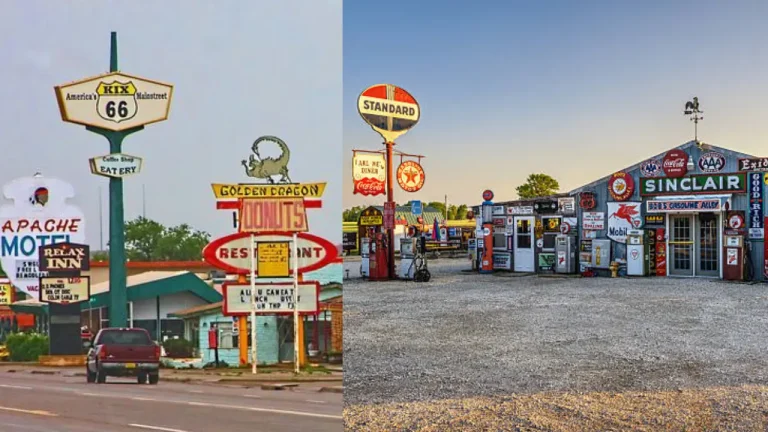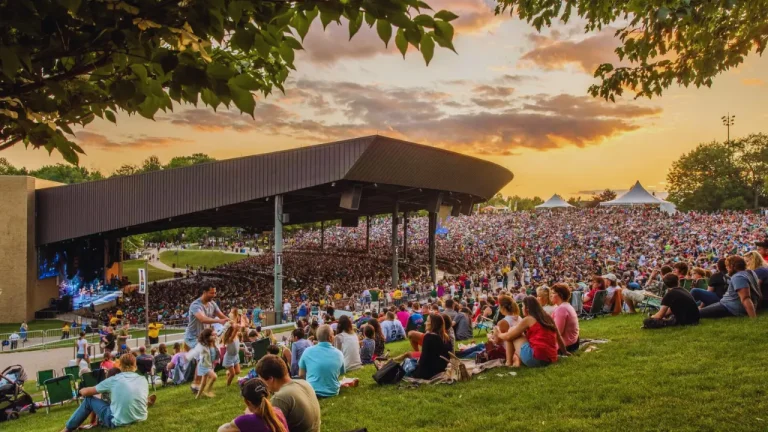The Amish community in Pennsylvania represents a lifestyle that has remained frozen in time. Modern conveniences here give way to far more orthodox values and ways of living. The Amish of Lancaster County in Pennsylvania is America’s oldest Amish settlement. They stand out for their unique way of life. Originating from Swiss and Alsatian Anabaptist Christianity, they are known for their simple living, rejection of modern conveniences, and strong community bonds. Their commitment to humility, manual labor, and strong faith makes them one of the most fascinating groups in the United States.
The Amish, being separated from contemporary society, lead intensely interrelated lives. They are highly involved in farm life, religious expression, and community activities. Lancaster city itself was once named by Forbes as one of the 10 coolest cities in the USA to visit. As soon as you enter their villages and farmlands, you feel a sense of peace and calm. But more importantly, you will feel like you traveled back in time. They still ride on horses and buggies and are dressed in modest or plain clothes, the towns have windmills and are far from the technology and advancements we see in other cities. Come with us on a journey to see the Pennsylvania life of the Amish.
Amish Journey To North America
Religious persecution in Europe and the promise of religious freedom brought many Amish to Pennsylvania in the early 1700s. They settled in places like Berks and Lancaster counties, drawn by the availability of farmland and tolerance for their beliefs. Today, Pennsylvania remains home to one of the largest Amish populations in the world.
By the mid-19th century, differences in how to adapt to modernity led to splits within the Amish community. The Old Order Amish, the most traditional group, chose to preserve their way of life without significant changes. Other groups, like the New Order Amish and Beachy Amish, adopted some modern practices but still maintain strong ties to their heritage.
Core Beliefs and Practices: The Heartbeat of the Amish
The Amish way of life is guided by a set of rules called the Ordnung. These rules dictate nearly every aspect of daily life, from clothing to technology use and even social interactions. Each Amish district interprets the Ordnung slightly differently, but the focus remains on simplicity and humility.
Amish religious life centers around community worship. Services are held every two weeks in homes or barns rather than churches. Baptism, usually between ages 16 and 23, is a key milestone, symbolizing a commitment to the faith and community.

Their daily practices, instead of being routines, are rituals that reinforce values. Every chore, from tilling the fields to handcrafting furniture, is done with greater purpose and greater care throughout the day and night. The attention to detail retains not only their self-sufficiency but also tightens bonds among themselves in the community.


Family and Economic Independence
Family is the cornerstone of Amish life. Large families are common, and everyone contributes to the community. Roles are traditional, with men focusing on farming or trade and women managing the home. Amish families often work together, fostering strong bonds.
Traditionally farmers, many Amish have diversified into small businesses like woodworking and construction due to the decreasing availability of farmland. They also operate markets selling homemade goods, from baked items to handcrafted furniture. The Amish community is self-reliant, with members pooling resources to support each other in times of need.



When one of the Amish families is having a rough time, it is exactly when the community acts. Whether it’s raising barns or holding a quilting bee, any event serves to help their fellow neighbor to be taken care of for good. This collective approach has nobody without this help where individuals cannot struggle alone, and it is a great example of the sustainability of support within the community.


Technology and Transportation: Balancing Tradition and Modernity
The Amish famously avoid modern technology, including electricity, cars, and telephones. Their reasons are tied to their beliefs: technology can disrupt family time and lead to pride or competition. Instead, they use horse-drawn buggies for transportation and rely on community efforts to meet their needs.
Due to changes around them, the Amish make selective adaptations to maintain cultural integrity. Modern tools, such as solar panels used for businesses or pneumatic tools used in construction, show one the pragmatic response to modern challenges.
Some subgroups, like the Beachy Amish, have adopted limited technology, including cars and modern tools. Even among the Old Order Amish, practical necessities sometimes allow for exceptions, such as using phones for business purposes.
Celebrating Cultural Richness: Amish Festivals and Social Gatherings
Community gatherings and festivals play a very significant role in Amish tradition and culture. Festivities for weddings, harvest, and the like serve as avenues for strengthening social bonds, reinforcing traditional norms, and passing these on to the younger generation.

There is a sharing of stories and talents. Each household prepares plenty of food showcasing their community’s unity. These festivals not only keep alive the cultural fabric but also reinforce identity and continuity in the Amish way of life.


Education and Youth: Training the Next Generation
The Amish operate their own schools, usually one-room schoolhouses, where children learn practical skills alongside basic subjects. Formal education ends at the eighth grade, as the Amish believe this is sufficient for their way of life. This approach was upheld in the landmark Supreme Court case Wisconsin v. Yoder in 1972.
Amish community in Pennsylvania education places more emphasis on “practical skills” than on a respected pursuit of academic knowledge, a true reflection of values and lifestyle. Children attend one-room schoolhouses through the eighth grade, where they receive basic skills that will sustain them in everyday living and later in their responsibilities within the community. Their education remains quite practical in nature, so the youth know how to go about farming, craftsmanship, and homemaking.
The Amish face challenges from the outside world, including legal issues, education requirements, and occasional discrimination. Despite this, they continue to grow rapidly, with the population reaching over 400,000 in 2024. Their way of life aligns closely with values like environmental conservation, making them a unique example of sustainable living in the modern world.
Interaction with Technology: A Measured Approach
The Amish are famously restrictive with regard to their attitude toward technology. They feel that certain conveniences will disrupt the order of their lifestyle and morals. On the other hand, the Amish do not oppose all technology.
The Amish people use diesel generators for refrigeration or booths for emergency calls. This shows practicality in regards to maintaining welfare within the community while still preserving principles.



Conclusion
The Amish community in Pennsylvania is otherworldly and traditional. Not just a peek into a world of simplicity but one that offers a few sound lessons about living lightly, valuing community and family over material gain. Moving forward into a world that prizes pace and convenience, the Amish will serve to remind us of the profound benefits derived from slowing down and focusing on what really matters in life.
This Pennsylvania Amish tour is not about visiting people who live differently but finding time for reflection about our own lifestyle and how to inculcate the lessons of simplicity, sustainability, and community into the crazy hustle and bustle of our lives. Let the insights from this journey spill over into our daily decisions and interactions.
Also read,










